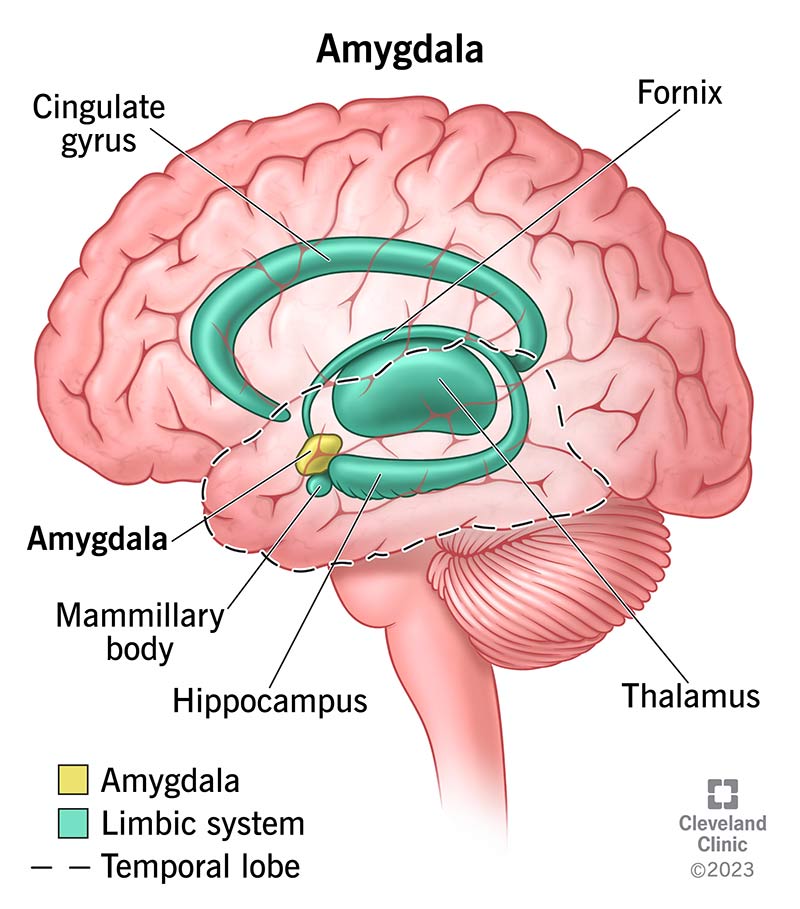how meditation rewires your brain

Life is a whirlwind of experiences, sometimes akin to a puzzle with missing pieces. Amidst this hustle and bustle, the buzz around meditation seems incessant.
It’s everywhere. From bustling cities to tranquil villages, people are embracing meditation as a tool to navigate life’s twists and turns.
But let’s put aside the clichés for a moment. Instead of viewing meditation as a means of reaching divine enlightenment or indulging in mystical rituals, let’s explore its essence from a more grounded perspective.
What exactly happens in our brains when we meditate? How does it truly impact us?
Meditation isn’t just about finding inner peace; it’s a profound dance of neurons and neurotransmitters within our brains. This process affects us fundamentally beyond the surface calmness it often brings.
So, let’s dive into the science behind meditation and uncover its tangible effects on our minds and bodies.
Because by understanding its mechanisms, we can fully embrace and appreciate its benefits in our everyday lives. These benefits are abstract concepts and tangible improvements in our mental and physical well-being, giving us hope and motivation to continue our meditation practice.

Key Takeaways
- Restructuring of the Brain: Meditation induces significant changes in the brain, including an increase in gray matter density and volume. This restructuring occurs in areas associated with memory, empathy, stress regulation, sensory perception, coordination, emotion, and cognition.
- Enhanced Memory and Decision Making: Meditation has been linked to increased gray matter in areas such as the hippocampus and frontal cortex, contributing to improved memory formation, decision-making, and working memory, even in older individuals.
- Cultivation of Compassion: Gray matter density in areas like the temporoparietal junction (TPJ) increases through meditation, potentially enhancing social cognition and compassion. This suggests that meditation can promote empathy and understanding of others’ intentions and emotions
- Reduced Mind Wandering and Unhappiness: Meditation reduces activity in the Default Mode Network (DMN), associated with mind-wandering and self-referential thoughts. By calming the DMN, meditation improves focus, reduces anxiety, and enhances cognitive abilities such as memory and decision-making.
- Stress Reduction and Emotional Regulation: Meditation leads to decreases in brain cell volume in the amygdala, the region associated with fear, anxiety, and stress. This reduction correlates with decreased stress levels, indicating that meditation can change both brain structure and subjective perception of stress.
- Increased Pain Threshold: Studies have shown that regular meditators exhibit a higher pain threshold, potentially due to changes in brain regions involved in emotional responses to pain.
- Brain Wave Organization: Meditation guides and organizes brain waves, with alpha waves associated with inner focus and gamma waves linked to compassion and happiness. This organization of brain waves contributes to inner peace and emotional well-being.
- Increased Brain Interconnectivity: Meditation increases white matter in the brain, improving communication between different regions. This enhanced interconnectivity supports cognitive functions and overall brain health.
- Physical Health Benefits: Beyond mental well-being, meditation has physical health benefits, including stress reduction, pain management, and alleviation of stress-related symptoms such as muscle tension, digestive issues, and sleep disturbances.
- Purpose and Practice of Meditation: Meditation is an active form of brain training aimed at increasing awareness and presence in the moment. Various meditation techniques, such as mindfulness, body scan, loving-kindness, Zen, and mantra meditation, offer different approaches to achieving mindfulness and relaxation.
- Conclusion: Embracing meditation as a journey involves overcoming challenges and distractions while strengthening mental resilience. By actively altering brain structure through meditation, individuals can enhance overall well-being and quality of life.
Neurological Benefits of Meditation
Increase in gray matter volume and density- Meditation restructures your brain
When engaging in meditation, notable transformations occur within the brain. Research indicates that consistent meditation practice can result in an augmentation of gray matter density and volume, particularly in regions linked to memory, empathy, and stress management.
Since gray matter is a type of neural tissue in your brain that contains neuronal bodies, axon terminals (endings) and dendrites, where information processing such as sensation, perception, voluntary movement, learning, speech, cognition happens, the increase in gray matter density can help with general cognitive ability.
- Meditation keeps your brain younger. A longitudinal study conducted at UCLA revealed that individuals who have practiced meditation for over two decades exhibit greater gray matter volume across multiple brain regions.
This finding underscores the widespread impact of meditation throughout the brain, dispelling the notion of isolated effects in specific regions previously associated with meditation. - Meditation helps with sensory perception, coordination and regulation of emotion and cognition. Long-term practitioners demonstrate heightened gray matter concentration in areas like the cerebellum, insula, auditory and sensory cortex.
Such enhancements align with the mindful practice of attending to present-moment experiences of breathing, sounds and sensations in your body, suggesting a correlation between mindfulness and heightened sensory acuity.
Furthermore, the cerebellum’s role extends beyond sensory perception integration/coordination/motor control to include emotion and cognition regulation. - Meditation contributes to improved memory and decision-making abilities, as evidenced by increased gray matter in the frontal cortex.
Despite cortical shrinkage being a common occurrence with age, meditators in their fifties exhibit comparable gray matter levels to individuals half their age in this specific brain region. - Meditation cultivates compassion. The cultivation of compassion through meditation is also evident, as observed through augmented gray matter density in the temporoparietal junction (TPJ).
This area, associated with social cognition and understanding others’ intentions, shows heightened activation in meditators.
Such morphological changes in the TPJ may underpin the increase in compassion attributed to meditation training and the development of an embodied self.
Brain is like a muscle that gets stronger and more resilient with exercise. This is a process known as neuroplasticity.
Through the mechanism of neuroplasticity, meditation fosters the growth of new connections between neurons, facilitating cognitive enhancement and emotional well-being.
Increase in cortical thickness in hippocampus – Enhance memory and emotional regulation
In a Harvard study of eight weeks of Mindfulness-Based Stress Reduction (MBSR) in 2011 found that mindfulness meditation was found to increase cortical thickness in the hippocampus.
The hippocampus is involved in memory, learning, and emotion. Its largest job is to hold short-term memories and transfer them to long-term storage in our brains. It also plays a role in emotional processing, including anxiety and avoidance behaviors.
The name of the hippocampus structure is derived from the Greek word for “seahorse” because the hippocampus is seahorse-shaped.
Moreover, the hippocampus plays a pivotal role in spatial navigation, aiding individuals in traversing and recollecting spatial directions, thereby forming mental maps of their surroundings.
This function is indispensable for avoiding disorientation, even in familiar environments. Emotional memory processing often involves the amygdala, colloquially known as the brain’s “fear center,” which becomes activated alongside the hippocampus during emotional memory processing.
Researchers speculate on the implications of hippocampal volume changes, proposing that increases may correlate with several beneficial outcomes:
- Meditation can enhance memory: since the hippocampus is critical for forming new memories and helping us remember events and fact(while the prefrontal cortex is involved in the retrieval of these memories), the 16 people who participated in the study for 8 weeks showed increased gray matter density in the left hippocampus as opposed to before.
- Meditation can enhance memory through decreasing stress hormones: Additionally, meditation’s stress-reducing properties offer a pathway to memory enhancement by mitigating the detrimental effects of cortisol, a stress hormone known to impair memory function and potentially shrink the hippocampus.
By lowering cortisol levels, meditation may indirectly fortify memory and learning capacities. (neurosciencenews.com) - Meditation can stimulate the birth of new neurons: Neurogenesis, is the process of generating new neurons, particularly within the hippocampus, which is one of the few brain regions that continue to produce new neurons throughout adulthood.
This phenomenon could further augment memory capabilities by birth of new neurons. - Meditation helps with soothing depression and improves emotional regulation: Since decreases in the density and volume of the hippocampus area can lead to negative emotions, like stress or several mental health disorders(depression and PTSD), (everyday health) – the increase in cortical thickness in this area can contribute to improved emotional regulation.
Reduced activity in DMN(Default Mode Network) – reduced mind wandering reduced unhappiness, increased cognitive ability
Recent studies conducted at Yale University have illuminated the transformative effects of mindfulness meditation on the brain, particularly in reducing activity within the default mode network (DMN).
This network, comprising key regions such as the dorsal medial prefrontal cortex, posterior cingulate cortex, precuneus, and angular gyrus, is renowned for orchestrating mind-wandering and self-referential thoughts, colloquially termed “monkey mind.”
It is best known for being active when a person is not focused on the outside world, and the brain is at wakeful rest, such as during daydreaming and mind-wandering.
The DMN is “on” or active when we’re not thinking about anything in particular. Since mind-wandering is typically associated with being less happy – A study found that people spend 46.9 percent of their waking hours thinking about something other than what they’re doing, contemplating events that happened in the past, might happen in the future, or may never happen at all.
Also read >>> Digital Detox: How to Reduce Screen Time With Yoga and Meditation
This study shows that our mental lives are pervaded, to a remarkable degree, by the nonpresent. In fact, how often our minds leave the present and where they tend to go is a better predictor of our happiness than the activities in which we are engaged. Therefore, it’s the goal for many people to dial it down
By diminishing DMN activity, mindfulness practice enables individuals to anchor their attention to the present moment and the tasks at hand. This reduction in mental drift fosters heightened focus and control over intrusive thoughts, thereby mitigating lapses in attention commonly associated with anxiety.
And even when the mind does start to wander, meditators are better at snapping back out of it because meditation cultivates resilience against the allure of mind-wandering, empowering individuals to swiftly redirect their focus when stray thoughts arise.
This adeptness at returning to the present moment underscores the profound capacity of mindfulness to cultivate mental discipline and cognitive acuity.
- Meditation can improve attention, concentration, and overall psychological well-being: One recent study found that just a couple of weeks of meditation training helped people’s focus and memory during the verbal reasoning section of the GRE by an increase of 16 percentile points.
Given that meditation primarily seeks to cultivate a concentrated focus of attention on specific objects, ideas, or activities, it is unsurprising that it can positively impact individuals’ cognitive abilities in professional settings. - A 2013 study suggested that Mindfulness meditation has been shown to reduce the tendency for the mind to wander and enhance cognitive function.
Researchers observed that individuals who underwent a two-week mindfulness meditation program exhibited improved focus and memory during GRE tasks. This training resulted in higher scores and a decrease in instances of distracted thinking.
Decrease in brain cell volume in amygdala – reduced stress and anxiety
Several researches((1), (2), (3), (4)) found reductions in gray matter density, indicating decreases in brain cell volume, within the amygdala following meditation practice. The amygdala, associated with emotions such as fear, anxiety, and stress, displayed these changes in tandem with participants’ self-reported stress levels.
This suggests that meditation not only induces structural alterations in the brain but also influences our subjective perceptions and emotional experiences.
Amygdala, as seen in the picture(Cleveland clinic, 2023) is a small, almond-shaped structure inside of your brain. It’s part of a larger network in your brain called the limbic system.
When it comes to your survival, your amygdala and limbic system are extremely important. These are parts of your brain that automatically detect danger. They also play a role in behavior, emotional control and learning.

However, research shows that the amygdala contributes to more than just anxiety or fear. It also plays a role in the following:
- Aggression.
- Learning through rewards and punishment.
- Handling and using implicit (unconscious) memory, which allows you to remember how to do certain things without remembering how you learned them (like riding a bike or tying your shoes).
- Social communication and understanding, including how you interpret someone’s intentions from how they talk or act).
- Emotions that relate to parenting and caregiving.
- Emotions we connect to memories.
- Learned behaviors related to addiction.
In a research the functional MRI shows activation level in amygdala decreased while watching emotional content before and after learning meditation (left is before, right is after) (Harvard gazette, Gaelle Desbordes).
A study at Johns Hopkins looked at the relationship between mindfulness meditation and its ability to reduce symptoms of depression, anxiety, and pain.
Researcher Madhav Goyal and colleagues discovered that the impact of meditation yielded a moderate effect size of 0.3. While this figure may seem modest, it’s important to note that the effect size for antidepressants also stands at 0.3, highlighting the significant impact of meditation.
Also read >>> The Role of Meditation in Online Yoga Teacher Training
Higher pain threshold
In a study both dedicated Zen practitioners and non-meditators were subjected to a controlled experiment involving exposure to gradually increasing heat near their skin until they reached their pain threshold.
Surprisingly, the Zen practitioners exhibited a higher pain threshold compared to non-meditators, even when they were not actively meditating during the experiment.
Upon analyzing the brain scans of the participants, scientists observed that the dorsal anterior cingulate cortex (ACC) in the meditators was thicker.
This increased thickness was associated with their reduced sensitivity to pain. It’s known from previous research that the ACC plays a key role in the emotional response to pain.
Therefore, it’s plausible that the larger size of this brain region enabled the meditators to endure higher temperatures by unconsciously modulating their reaction to the painful stimuli.
Organization of brainwaves – enhance inner peace and increase happiness
The brain operates on various levels of waves, and meditation is recognized for its ability to guide and regulate these brain waves, which serve as the means of communication between neurons.
Within the spectrum of brain waves, there exist five primary states, each characterized by different frequencies and amplitudes and we have a combination of these states in varying degrees at any given time.
Brain waves range from high-amplitude, low-frequency delta to low-amplitude, high-frequency gamma.
To monitor the dynamic shifts in brain activity, scientists utilize EEG sensors, small electrodes placed on the scalp resembling a cyborg headgear.
EEG enables the detection of rapid electrical fluctuations known as brain waves, which are categorized based on their frequency, reflecting different states of awareness.
Most forms of meditation cultivate alpha brain waves which are midrange, varying from eight to twelve cycles per second.
Alpha waves are linked with inner focus, creating a state of awareness where one remains attuned to the surroundings without reacting.
This alpha state induces relaxation, promoting feelings of tranquility and serenity while keeping the mind awake and receptive, yet unburdened by specific thoughts or actions. Experienced meditators acquire the skill to transition effortlessly into and out of alpha states, among others, at their discretion.
Also a study revealed heightened gamma waves during practices such as loving-kindness or compassion meditation.
Gamma waves, the fastest brain waves oscillating at 25-100 cycles per second, were found to be exceptionally elevated in Tibetan Monks proficient in loving-kindness meditation, surpassing previous records.
This remarkable discovery earned one monk, Matthieu Ricard, the nickname “the happiest man in the world.”
In another study, they have found that after 8 weeks of meditation, ALFF(Amplitude of low frequency fluctuation) was decreased and decreased ALFF in left precuneus/posterior cingulate cortex correlates with the reduction of (CES-D) depression scores.
Thicker brain wires – Increased interconnectivity
In order for the brain to work as an integrated whole, the different brain regions need to send and receive information to and from each other. This is done through the brain’s white matter. white matter is found in the deeper tissues of the brain (subcortical).
It contains nerve fibers (axons), which are extensions of nerve cells (neurons). Many of these nerve fibers are surrounded by a type of sheath or covering called myelin. Myelin gives the white matter its color.
It also protects the nerve fibers from injury. It improves the speed and transmission of electrical nerve signals along extensions of the nerve cells called axons. By comparison, gray matter is tissue found on the surface of the brain (cortical). It contains the cell bodies of neurons, which give gray matter its color.
In the brain, cell communication occurs via electrical signals that move along wire-like structures. These structures are enveloped in an insulating layer, facilitating rapid information transmission. Through regular mindfulness meditation practice, these insulating layers can become thicker, leading to improved and swifter flow of information across different brain regions(HPRC).
Study findings suggest that meditation increases the amount of white matter in the brain which develops channels of communication between them.
Two studies((1),(2)) found that after just 4-weeks of mindfulness training, the corpus callosum (a huge bundle of white matter fibres that connect the right and left halves of your brain) and other white matter structures in the brain had grown physically larger.
Physical Health and Meditation
The advantages of meditation go beyond mental well-being; they also positively impact the body. Meditation not only slows down brain aging, resulting in enhanced cognitive abilities as individuals age, but also aids in pain management and alleviating physical symptoms associated with stress by reducing stress levels.
Stress can manifest in physical symptoms, and meditation helps mitigate these effects. Some of the stress related physical symptoms are:
- Hair Loss: Normally, hair sheds as hair follicles transition from the growth phase to the resting phase. Stress can disrupt this cycle, causing more follicles to enter the resting phase simultaneously, resulting in increased and more noticeable hair loss.
- Upset Stomach: Stress can induce various gastrointestinal symptoms, such as abdominal discomfort, heartburn, nausea, diarrhea, and constipation. It can adversely affect the digestive system, ranging from minor symptoms like discomfort, gas, and irregular bowel movements to complex conditions like irritable bowel syndrome and acid reflux (GERD).
Stress may also influence eating habits, leading to overeating or undereating, and in severe cases, vomiting. - Muscle Aches and Pains: Stress can cause muscle tension, eventually leading to pain and soreness in various parts of the body. Common areas affected include the neck, back, and shoulders.
- Jaw, Ear, or Head Pain: Under stress, many individuals unknowingly clench their jaws or grind their teeth, resulting in uncomfortable tightness or soreness in the jaw, ears, or head.
- Lightheadedness and Dizziness: Stress triggers an increase in heart rate and shallow breathing, potentially causing feelings of dizziness or lightheadedness.
- Immune System: Stress weakens the body’s immune defenses, making individuals more susceptible to illnesses like colds or flu.
It can also exacerbate autoimmune conditions such as lupus and inflammatory bowel disease. Strengthening the immune system through stress reduction, alongside maintaining healthy eating habits and regular exercise, is crucial for overall health. - Reproductive Health: Stress can disrupt menstrual cycles, leading to irregularities like missed periods or delayed menstruation. Prolonged stress-induced menstrual irregularities may contribute to hormonal imbalances or secondary amenorrhea, creating a cycle of stress and uncertainty.
- Sleep: Stress can disrupt sleep patterns, causing difficulty falling or staying asleep. Persistent worrying or engaging in stimulating activities like gaming or scrolling through devices can exacerbate sleeplessness.
Over time, inadequate sleep due to stress can have detrimental effects on health, potentially leading to sleep disorders like insomnia. - Weight Gain: Stress triggers the release of cortisol, a stress hormone that can impact metabolism. Excessive cortisol levels can disrupt bodily functions and slow down metabolism, contributing to weight gain. Managing stress effectively can help regulate cortisol levels and support a healthy metabolism.
Through meditation you can reduce stress levels and therefore, reduce the rise of stress related physical symptoms and pain as well.
Meditation’s Role in Daily Life
What is the purpose of meditation?
Meditation is essentially a dynamic practice for the brain. There’s a common misconception that meditation involves merely sitting and being idle, which isn’t accurate. Instead, meditation entails actively training the mind to heighten awareness, with various meditation programs employing distinct approaches to achieve this goal.
Meditation is being present in the moment. When you immerse yourself in the present moment, concerns about the past or future dissipate.
This is why focusing on your breath serves as an effective anchor—it keeps you grounded in the present. Being present helps maintain equilibrium in our tumultuous world, which is the primary objective of meditation.
What does imbalance entail? It manifests in various ways: frustration over uncontrollable circumstances, disappointment when things don’t align with expectations, and fluctuating emotions ranging from extreme elation to deep despair.
Sensations of losing control or perpetual suffering also indicate imbalance.
Therefore, meditation aims to cultivate mindfulness, guiding individuals to consciously return to the present moment.
How do you practice it?
Incorporating meditation into your daily routine can be as simple as taking a few mindful breaths before starting your day or practicing a full session of guided meditation.
It’s about finding those moments of stillness amidst the chaos of everyday life. Imagine each session as a reset button, helping you approach your day with a clearer, more focused mind.
What are different meditation techniques out there?
There are various meditation techniques that offer unique approaches to achieving mindfulness and relaxation. Here’s a closer look at some popular methods:
- Mindfulness Meditation: In the realm of meditation, mindfulness takes center stage. This technique encourages individuals to be fully present in the moment, observing thoughts and sensations without judgment. A common focal point is the breath, providing a simple yet powerful anchor for attention.
- Body Scan Meditation: Body scan meditation involves systematically directing attention to different parts of the body. This practice promotes awareness and relaxation, starting from the toes and moving upward.
- Loving-Kindness Meditation (Metta): For those seeking to cultivate compassion, loving-kindness meditation, or Metta, focuses on generating feelings of love and goodwill. Practitioners extend positive intentions toward themselves and others, fostering a sense of connection and warmth.
- Zen Meditation (Zazen): Rooted in Zen Buddhism, Zazen emphasizes sitting in a specific posture while observing the breath and thoughts. This technique fosters mindful breathing and heightened awareness.
The goal of Zen meditation is to achieve a state of pure awareness and enlightenment. While Mindfulness is a secular awareness practice and isn’t connected to a religion; enlightenment is not a goal.
Zen meditation begins with getting into a seated position, usually in the half-lotus position (like the Buddha). And sometimes the eyes can be open during a zen meditation as well. - Transcendental Meditation: In the pursuit of transcending ordinary thought, transcendental Meditation introduces the repetition of a mantra. This practice aims to reach a state of restful awareness, providing a pathway to pure consciousness. The mantra is said to be a vehicle that allows the individual’s attention to travel naturally to a less active, quieter style of mental functioning
- Guided Meditation: Led by a teacher or through recorded audio, guided meditation provides structured visualization or prompts to focus attention. It serves as a helpful entry point for beginners and offers a diverse range of themes.
- Chakra Meditation: Derived from Hindu and yogic traditions, chakra meditation targets the body’s energy centers. By aligning and balancing these chakras, practitioners seek holistic well-being and spiritual alignment.
How one would practice chakra meditation is to Start at your root chakra as seen in the picture(Buddhism guide). Bring your attention to the base of your spine. Picture roots growing from your body into the earth, connecting you and keeping you grounded.
Visualize the color red as you take deep breaths in and out.Move up to your sacral chakra, to your solar plexus chakra, heart chakra, throat chakra, third eye chakra, crown chakra and Finally, bring your attention to the top of your head, to the crown chakra.
In each chakra picture the color associated with the chakra and the values they symbolize. Then, visualize all your chakras being in alignment, from base to tip. Picture the energy flowing upward through your body, healing you and giving you strength.
- Mantra Meditation: Utilizing the strength of repetition, mantra meditation entails silently or audibly repeating a selected word or phrase. The objective of this practice is to calm the mind and enhance focus. Examples of mantras include:
- The Sanskrit chant of Om, Om Shanti, or So Ham
- Hindu chants such as Gayatri mantra
- Buddhist chants like Om Mani Padme Hum
- Generic secular affirmations in English or your native language such as peace or love
- Personalized affirmations in English or your native language
- Vipassana Meditation: Deeply rooted in Buddhist tradition, Vipassana meditation entails observing bodily sensations to attain profound insights into the nature of reality.
It is frequently practiced during intensive retreats. Unlike mindfulness meditation, which emphasizes awareness, or transcendental meditation, which utilizes a mantra, Vipassana advocates for a universal directive of non-reaction.
Regardless of the discomfort experienced while sitting, or the numbing of hands and legs, or the mind’s plea for relief, practitioners are directed to redirect their focus to the objective sensations within their bodies.
This involves systematically scanning limbs in a specific sequence while observing sensations as they arise and subside. Through this practice, spanning over ten days, individuals train themselves to cease reacting to life’s fluctuations. - Yoga Nidra: Also referred to as “yogic sleep,” yoga nidra represents a guided relaxation technique. It entails a structured body scan and deliberate relaxation, fostering profound rest and revitalization.
Conclusion
Neuroscientists are uncovering greater brain plasticity than previously thought, highlighting our ability to actively reshape brain structure for enhanced well-being and quality of life.
Embarking on a meditation journey may present obstacles such as distractions, restlessness, or self-doubt. Yet, these challenges are integral to the process.
Each instance of guiding your wandering mind back strengthens your mental resilience, akin to exercising a muscle. Embrace this journey with openness, and experience the transformative impact of meditation on your life.



